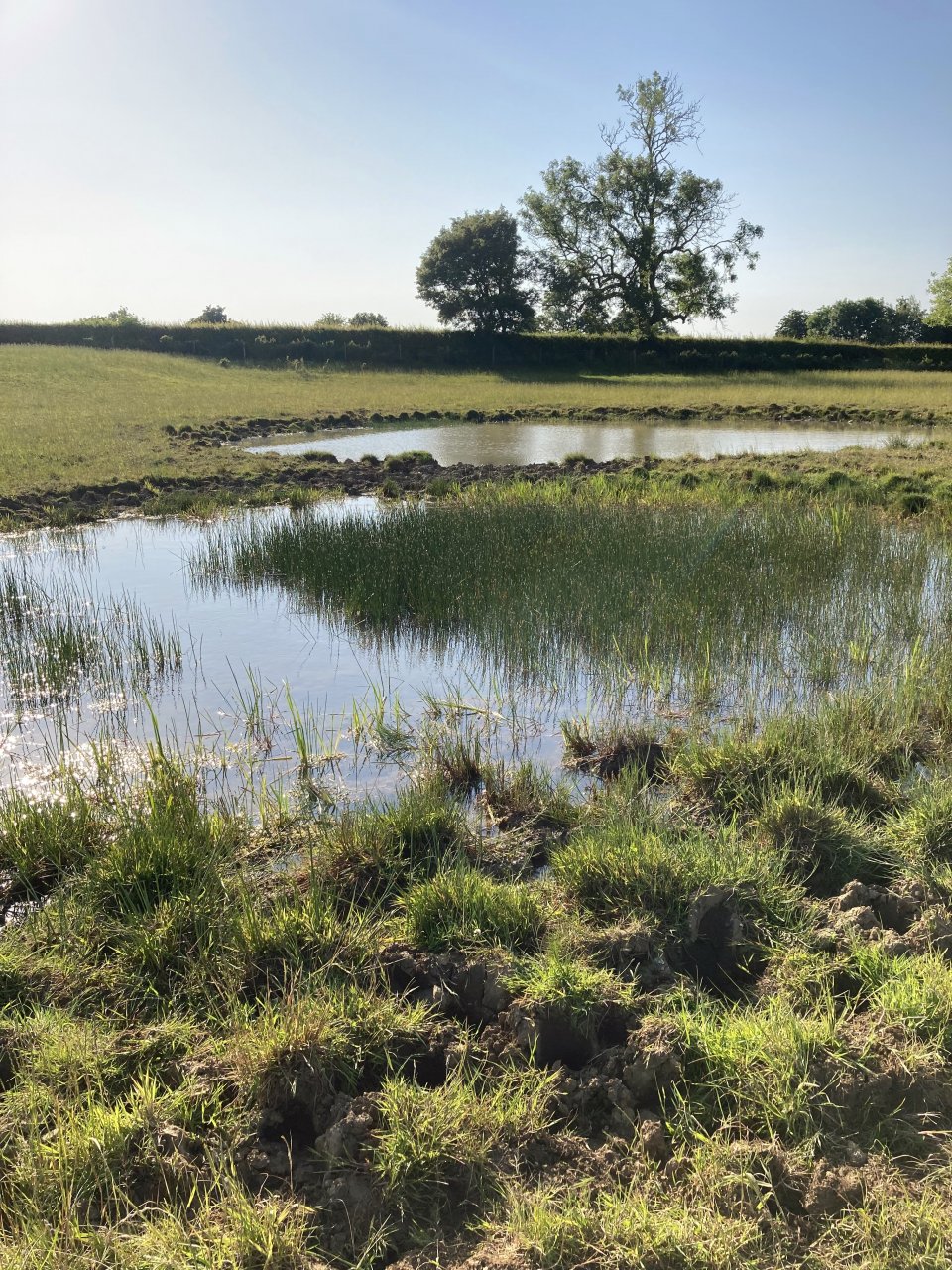
Location: Typical mixed lowland farming area of central England.
Area: three adjacent upper catchments each c 10km2
This pondscape is located in a farmland near Leicester. All waterbodies in three upper catchments have been monitored since 2010. The results show an underlying landscape-wide decline in freshwater plant biodiversity of 0.5-1% pa. However doubling the number of clean-water ponds turned the decline around: producing a steep increase in richness and tripled the number of uncommon species.
- Developing climate change adaptation; improving risk management and resilience
- Flood peak reduction
- Reduce flood risk
- Developing climate change mitigation
- Restoring ecosystems and their functions
- Improve connectivity and functionality of green and blue infrastructures
- Increase achievements of biodiversity targets
- Increase Biodiversity
- Increase quality and quantity of green and blue infrastructures
- Increased cultural richness and biodiversity
- Improve water quality
- Increase awareness of NBS solution & their effectiveness and co benefits
- Increase stakeholder awareness & knowledge about NBS
- Increase willingness to invest in NBS
The results are likely to be transferable to agricultural lowlands across Europe and beyond.
Freshwater plant diversity is declining in agricultural catchments when measured across all waterbody types.
Creating new clean water ponds in agricultural landscapes has exceptional potential to mitigate freshwater biodiversity loss and enhance regional freshwater biodiversity
Creating new multi-functional ponds (e.g. intercepting agricultural runoff) has more limited benefits. These ponds often rapidly decline in quality, but can still provide more limited support for regional biodiversity
Pond restoration can also help to support catchment-scale biodiversity, although some uncommon species which appeared immediately after restoration soon disappeared.
Further information
- 13. Climate Action
- 14. Life Below Water
